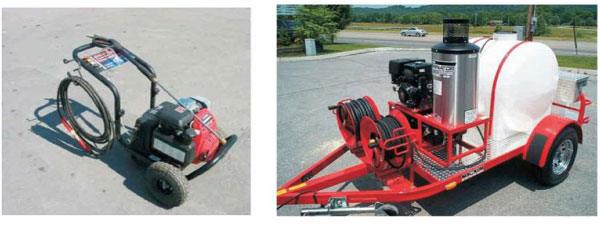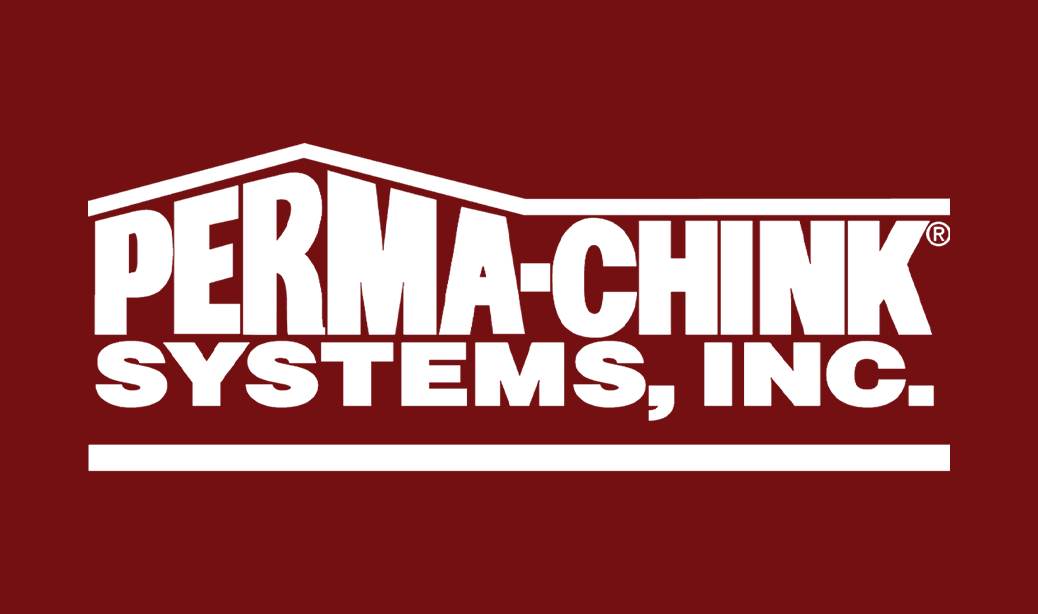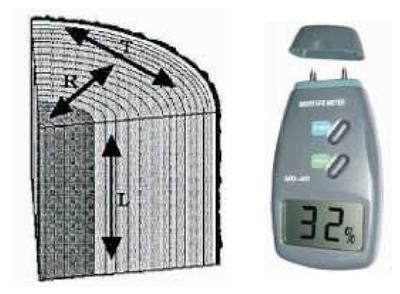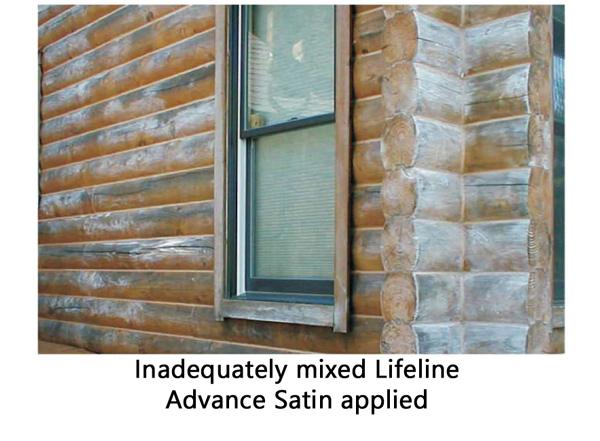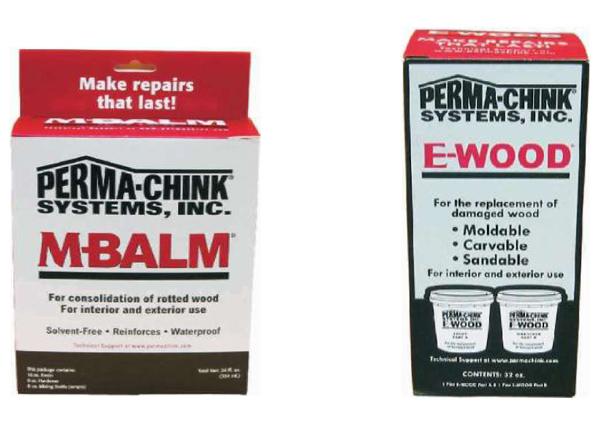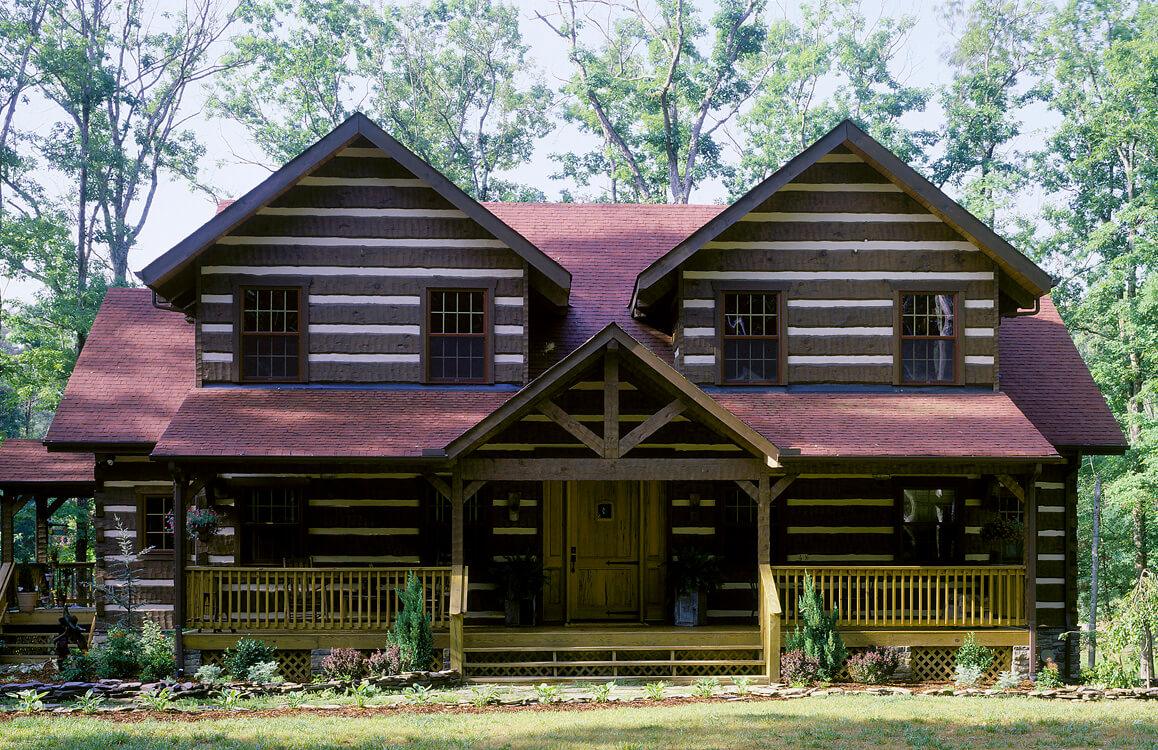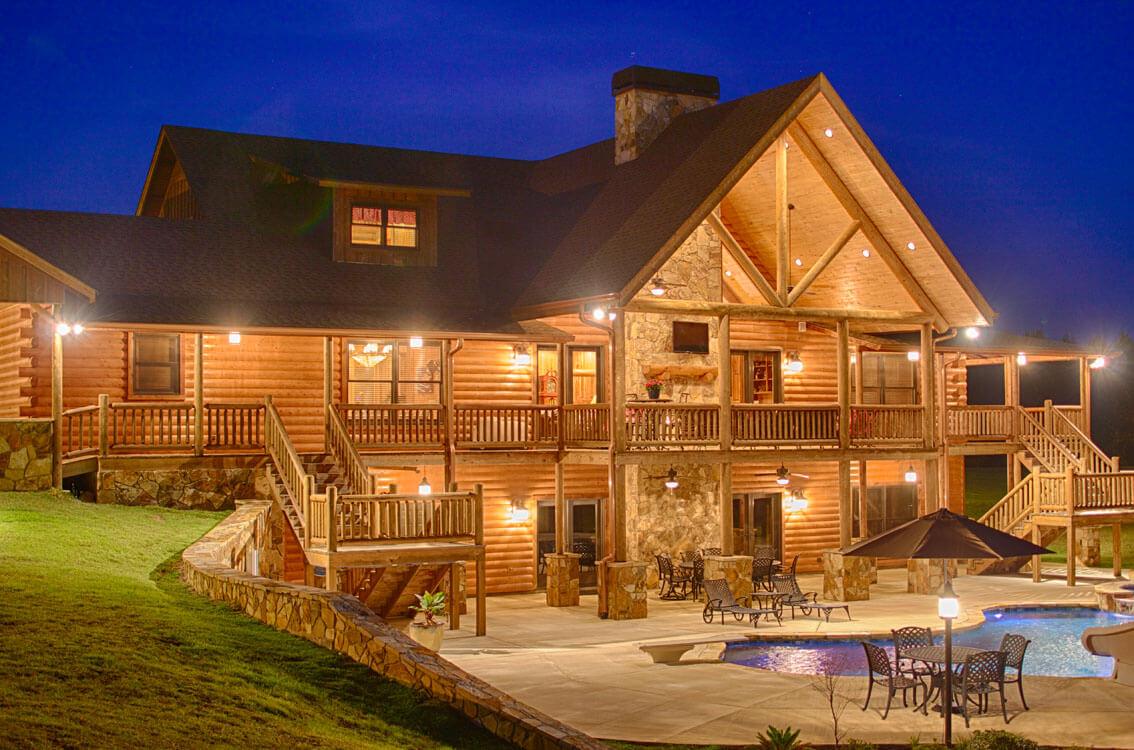Blog
When preparing a home for a new finish, one tool we typically recommend is a pressure washer. However, all pressure washers are not created equal. Choosing the right pressure washer for the job is critical for the proper performance of our cleaning and finish removal products.
When selecting a pressure washer, there are some things to look for. One of the most important features is water output volume. It should be able to put out at least two to three gallons of water per minute (2-3 gpm). A lower output tends to move the degraded stain and wood fibers down the wall, but does not necessarily wash them off of the wall. For example, electric pressure washes may generate enough pressure to clean, but since they only put out about 1/2 gallon of water per minute, they really are not suitable for cleaning a wall down to bare wood.
Although a good pressure washer typically generates 2500 to 3000 pounds of pressure (psi), it does not mean that you need that much pressure to clean the surface. You want to hit the surface of wood with no more than 600 psi in order to avoid excessive feathering. However, the higher pressure allows you to stand back from the wall and clean off a wider swath with each pass of the wand tip. For removing old finishes we recommend using a 25-degree fan tip or an adjustable nozzle, if it’s available.
One more thing about pressure washers: we don’t recommend running any of our cleaners or strippers through the pressure washer. Our products should be applied separately, allowed to work on the surface for the labeled amount of time, then you should use the pressure washer to wash it off. To avoid streaks and runs, clean from the bottom up and rinse from the top down.
A pressure washer will definitely test the sealant system of a home. Water will undoubtedly enter the home, so have someone inside with some towels and to mark water entry points for later inspection and sealing. Lastly, the wood must be allowed to dry at least a day and be dry to the touch before applying a caulk, stain, or a wood preservative.
For many years oxalic acid has been one of the most commonly used products for brightening and preparing wood surfaces for a coat of stain. Why? Prior to the introduction of organic solvent finish removers in the late 1990s, the most popular paint and stain removal products were caustic chemical strippers which contain sodium or potassium hydroxide. They are still sold at most paint stores, and although quite caustic and somewhat hazardous, they have been used for over 100 years and are relatively inexpensive.
One negative feature of using any hydroxide stripper is that it’s extremely high pH turns the wood dark. After a hydroxide stripper is used, it is standard procedure to apply a solution containing oxalic acid to the wood to bring the wood back to its original color prior to the application of a stain. That’s how Oxcon attained its original description as a “Blonding Agent.” There is also a belief that since it is an acid, it helps “neutralize” any hydroxide residue remaining in the wood, thus preventing wood fiber degradation due to the presence of highly alkaline chemical residue.
Since oxalic acid does do a good job restoring the color of the wood after the use of sodium or potassium hydroxide, as well as removing metallic tannate discolorations, over the years it gained a reputation as being a “cure-all” for other types of wood discolorations as well. One reason is because many discolorations that were attributed to mold were in fact not mold, but metallic tannate or inorganic stains. Somehow oxalic acid also got a reputation for helping remove grayed or photooxidized surface wood fibers. In reality, it does not do a very good job and there are other products, like our Wood ReNew™, that are much more effective.
If not properly applied, oxalic acid can do more harm than good when it comes to preparing the surface for a water-based film forming finish like Lifeline™. Film-forming water-based finishes rely on the integrity of the surface fibers to assure adhesion to the wood. If the surface fibers are damaged and the film does not have intact fibers to bond to, peeling of the applied finish can result.
We have found in our testing that the use of concentrated oxalic acid, or even a small amount of residual oxalic acid left on the wood, can seriously affect the adhesion properties of water-based finish systems.
Like chlorine bleach, oxalic acid is subject to being easily misused. For example, even when properly diluted to our labeled instructions, if left on the wood too long, especially in hot dry conditions, the water will begin to evaporate and the concentration of the acid solution increases proportionally, eventually reaching a point where damage to the wood fibers can occur. Another potential problem with oxalic acid solutions is that when they react with alkaline compounds, they form oxalate salts which are quite insoluble and almost impossible to rinse off with water. They, too, can interfere with the adhesion of water-based finishes.
Most finish removers that are used today contain organic solvents that don’t darken the wood. Since oxalic acid does not remove grayed wood fibers or organic discolorations like brown stain, blue stain, or mold and mildew stains, what are the valid uses for Oxcon oxalic acid?
1. Oxcon oxalic acid is the only product that removes inorganic discolorations of metal tannates and rust. If, after stripping and cleaning the surface, there are still dark colored streaks or blotches, there is a chance that a solution of Oxcon will remove them. This includes some types of “water marks.”
2. If the stripping and cleaning process has turned the wood dark, a solution of Oxcon may help lighten it up.
To properly use Oxcon here are some guidelines that must be followed:
1. Make sure that any product that was previously applied to the wall has been thoroughly rinsed off prior to the application of the Oxcon solution.
2. Oxcon is a concentrate and MUST be diluted with four parts water. That’s one gallon of Oxcon mixed with four gallons of water. The use of a more concentrated solution won’t work any better and will damage the wood.
3. Don’t leave it on the wood for more than 15 minutes. If it’s a hot, dry day, wet the wall down before applying Oxcon and keep misting it with water to keep the acid concentration from getting too high. Never, ever allow Oxcon to dry on the wood. If oxalic acid crystals form from evaporation, they will be almost impossible to remove by rinsing with cold water.
4. After using Oxcon, adequate rinsing is mandatory. While rinsing, pay particular attention to any cracks or crevices where the Oxcon solution may have puddled. No one should ever use Oxcon without having pH strips at hand. Just a trace of oxalic acid left on the wood will seriously affect the adhesion of the finish.
After reviewing a number of past adhesion issues, we found that many of them were attributed to the use, or more accurately misuse, of oxalic acid. There is no reason to routinely use oxalic acid in a stripping and cleaning process just because it has been done it for years. Only use oxalic acid when it’s absolutely necessary. Sometime less is definitely best.
Moisture content of logs can dramatically affect the application of some of Perma-Chink Systems’ products. We recommend that moisture content is below 35% for maximum adhesion of our finishes.
The moisture content of a log is defined as the weight of the contained water divided by the dry wood weight times 100. For example, let’s say a green log weighs 100 pounds and we place it in a drying kiln until all of the water is removed. If the dry log now weighs 65 pounds, the original moisture content was approximately 54% (35 pounds water ÷ 65 pounds dry wood = 0.538 x 100).
Using this method of calculation you can see that it is not at all unusual for a recently cut log to contain well over 100% moisture content. In the field, moisture content is typically measured using a pin-type moisture meter that converts the electrical conductivity between the pins into approximate moisture content.
Once a tree is cut and the bark removed, it will begin to dry out. The water contained in the wood is in basically two forms: free water and water that is bound in the cell walls. The free water evaporates from the log first, and although there is some shrinkage during this process, it’s not until the wood reaches its fiber saturation point (FSP) of about 28% and begins to lose its bound water that significant shrinkage occurs. That’s why whenever a log home is built using very green logs, checks may not begin to open for several months, or even years, after the home was constructed.
Although shrinkage affects all dimensions of a log, some wood species are more prone to checking than others because their rate of radial shrinkage (R) is not as great as their tangential shrinkage (T). Shrinkage along the length of the log (L) is usually negligible. Radial cross section shrinkage can be quite significant and although it varies from species to species, shrinkage of 5-6% is not unusual. Thus a 10-inch round log with a radial shrinkage of 6% can lose more than 1/2 inch of its diameter as it dries.
Once logs have dried below their fiber saturation point, they will continue to shrink until they reach a moisture level that is in equilibrium with the relative humidity of their environment. In warm, humid areas like Florida or Louisiana, logs may never get below 18% moisture content, whereas in the Southwest, they may hold steady at 9-10% moisture content. In most areas of the country, the relative humidity of the air changes with the seasons. For example, in the Northeast air during the winter months is much drier (low relative humidity) than in summer. On the other hand, in the Pacific Northwest the highest relative humidity occurs during the winter months.
So how does all of this affect the application and performance of our sealants and finishes? Although it’s true that our products can be applied to green logs, if the surface of the logs are above the fiber saturation point, there may be so much free water in the surface cellular structure that both sealants and finishes will not be able to adhere properly to the wood fibers, compromising the adhesion. To be on the safe side, the surface moisture content should be 20% or less, as measured by a moisture meter. This is not the same as requiring that the entire log be less than 20% moisture content. We are only concerned with the surface, not the interior of the log – which may still contain 40-50% moisture, even though the surface may read 18% moisture content.
As previously stated, most of a green log’s shrinkage occurs after it has reached the fiber saturation point. Since log checking is associated with shrinkage, most checks will open up several months after the home is constructed, and continue opening until the logs reach an equilibrium with their environment. It is not unusual for large checks to open up two to three years after a home is constructed. If our finish system is applied before the logs reach the fiber saturation point, checks and fissures that later appear may allow rain water to get into the wood behind the finish. When the sun hits the water, saturated wood heat converts the liquid water to so much water vapor that it can overload the ability of the finish to breathe. This is one of the leading contributors to peeling.
Sealing checks before the logs reach their moisture equilibrium point can be an exercise in frustration for a homeowner. What may start out as a small fissure can easily turn into an inch-wide check within a few months. If sealed too soon with Check Mate 2®, the enlargement of the check can exceed the elongation capability of the Check Mate 2 and may eventually provide an entry point for water.
In the homeowner’s eyes, the Check Mate 2 failed since he or she may not remember how narrow the check was when it was originally sealed. There is no perfect solution to the challenges presented by constructing a home using very green logs. Most new log home owners are in a rush to get their home finished and sealed as soon as possible. However, allowing the logs to air dry a few months will improve the performance of both the sealant and finish systems, and help reduce the maintenance required for the first three to four years.
Although there is not much difference in the formulation between Lifeline Advance™ Satin and Advance Gloss, Advance Satin contains a flatting agent for the purpose of reducing its reflectivity, or “gloss.” This raw material can settle to the bottom of the container over time.
It’s important to mix ALL of our finishes before and during use, including Advance. Since it does contain a flatting agent, be sure to shake or mix Advance Satin until none of the flatting agent remains at the bottom of the pail or gallon container. Secondly, the container should be mixed or shaken during use every 20 to 30 minutes to assure a uniform dispersion. This will avoid areas of a wall or home looking “flatter” than others.
If inadequately mixed Advance Satin is applied to a wall, the only way to remove the white residue is to strip the entire finish off and start over again.
Perma-Chink Systems sells two epoxy products, M-Balm®, a wood consolidator that hardens loose, friable wood fibers, and E-Wood®, a putty used to fill voids or cavities in logs and timbers. Both M-Balm and E-Wood are two component epoxies. Like all epoxy products, they consist of a resin and a hardener and rely on a chemical reaction between the two components to become hard. As they react they often become warm, or even hot. M-Balm, in particular, can become quite hot about 15 to 20 minutes after the two components are mixed together.
Tip: Mix M-Balm in a disposable aluminum bread pan. This allows mixed component to release heat (exothermic) and cool while preventing you from melting your mix container or bottle.
There is one thing about epoxies that you should understand: as epoxies age they lose their chemical reactivity. The older they get, the longer it may take for the combined components to become hard. If unused epoxy has been in your garage for a couple of years or more, it’s not unusual for the hardening process to take three or four times longer than when using fresh product. It’s not that it won’t eventually harden, it’s just reacts slower and takes longer.
Never change the ratio of hardener to resin to try and speed things up. Unlike other types of resin and catalyst mixtures, M-Balm MUST be mixed together at a ratio of two parts of Part A to one part of Part B by volume. For E-Wood, equal volumetric parts of Part A and Part B MUST be kneaded together for these products to work.
Tip: Mix only the amount necessary to complete each step of a small job.
Here’s one more tip: M-Balm does NOT have to be cured before applying E-Wood. Epoxies do not “dry” in the sense that they must be in contact with air. They rely on chemical reactions to harden and cure, so M-Balm will harden just as rapidly under E-Wood as it will if left exposed. In fact, applying E-Wood before the M-Balm cures results in an even stronger bond to the wood.
Whenever the outside temperature is at least 20 degrees lower than the temperature within a home, it’s a good time to find any gaps that may be leaking air. All you’ll need is a small pail of warm water, a piece of chalk, and a perhaps a ladder depending on how high the ceilings are. If you dip your hand in the water then run your wet hand over the interior walls, keeping it about 6”-12” away from the surface, you will easily feel any cold air leaks that are coming through the walls or around the windows. As you move your wet hand closer to the wall you can pinpoint where the leak is located. Be sure to mark those leaking areas with the chalk.
If you have a box fan and want an even more efficient method of locating leaks, place the fan in a window or door blowing outward and cover the remaining opening with plastic sheeting. This will help draw cold air into the home through the leaks making them easier to find. A more accurate and sophisticated method of locating air leaks is with the use of an infrared camera. They are somewhat expensive, but there are people who specialize in doing energy evaluations of homes using this type of equipment.
The best way to attack air leaks is from exterior surfaces. Interior walls can be caulked, but if a crack or crevice is leaking air it may also leak water. Sealing the leak from the outside prevents water penetration along with air infiltration. Sealing with Energy Seal™ or Woodsman™ can be accomplished in cold weather as long as the temperature is above 40°F, and the wood is not wet or frozen. However, the pails or tubes of sealant should be stored in a heated area until they are used.

Maintenance caulking is really a two person job, one outside doing the sealing and one inside feeling for the leaks. Finding the outside source of the leak may not be as easy as it sounds, especially around window and door frames. The opening source of the leak may be several inches from the spot where it is felt inside the home. It’s just a matter of continuing to seal the area until the person on the inside no longer detects the air leak.
The most important step in finishing wood – whether it is a log wall, a piece of log siding, or even a piece of wood furniture – is the surface preparation prior to applying a finish system to the wood surface. This important message has been communicated by Perma-Chink Systems for many years. The reason this topic is so important is that this step, or process, has an impact on the longevity and durability of the system. More specifically, an unclean wood surface and the presence of foreign substances interfere with the direct surface contact of the coating with the wood substrate; furthermore, it will impact the adhesion properties of the finish in a negative manner as well as present a good possibility that wood discoloration will be a topic to deal with in the future.
Wood is a unique, natural substrate that appeals to us due to its beauty and natural characteristics. The application of a semi-transparent or transparent stain allows us to highlight the natural grain, bringing out and exposing its true beauty while adding color. So, are all wood species the same in composition, and therefore can be prepared in the same way, using the same cleaning products? The obvious answer to this question is no. We can simply tell this by looking at two different wood species and notice the differences in wood color and grain structure. These simple differences are an indication that not all wood species are created the same and their compositions are quite different. Although all wood species contains many of the same components including cellulose, hemicellulose, it is the wood extractives that differentiate wood species from one another.
Wood extractives are compounds present in bark, softwood, and heartwood of a tree that contribute to such properties of wood as color, odor, and decay and insect resistance. Consequently, these extractives can also discolor paint and finishes (water soluble extractives), as well as create adhesion issues (oil soluble extractives) for many coating types.
Extractives can be characterized as volatile oils (i.e. turpentine), wood resins (i.e. pitch or sap), fats and waxes, lignans (dimer molecules of lignin), tannins and carbohydrates (i.e. food reserves). All wood species contain wood extractives; however, there are a handful of wood species that are characterized as extractive rich woods. This group includes Redwood, Western Red Cedar, Walnut, and Mahogany. The second group of wood species also contain higher levels of wood extractives (but not as high as the extractive-rich woods) include Southern Pine, Douglas Fir, Spruce, and Cypress.
Cedar Wash™ was developed by Perma-Chink Systems as a Ready-to-Use cleaner specifically formulated for preparing the surface of wood species that contain high levels of wood extractives and resin oils. Cedar Wash is designed to remove surface resin oils and high concentrations of water-soluble wood extractives in addition to dirt, grease, grime, pollen, and surface mold and mildew without harming the wood.
- Designed specifically for Western Red Cedar and Redwood (Softwoods), Walnut and Mahogany (Hardwoods).
- Highly recommended cleaner for Southern Pine, Douglas Fir, Spruce, and Cypress.
- Removes resin oils and wood extractives from the surface of the wood that may interfere with adhesion of Lifeline™ exterior stains or Prelude™ to the wood surface.
- Removes dirt, dust, pollen and other foreign substances from log surfaces.
- Not recommended as a maintenance cleaner; refer to Log Wash™ for this task.
- Contains an aggressive detergent package for efficient cleaning of the wood surface.
- Safe to use on chinking and sealants.
- Easy to use, Ready-to-Use formula.
- Low environmental impact
Application Instructions
Since Cedar Wash is a Ready-to-Use material, no dilutions are required. Cedar Wash is most easily applied using a pump-up garden type sprayer although a mop and bucket works, too. If you are going to use a pressure washer (not recommended), adding Cedar Wash directly to the pressure washer does not give the cleaner enough contact time with the wood to be very effective.
- Plan on cleaning small areas at a time, since Cedar Wash needs to stay wet in order to work well and do its job.
- Apply the Cedar Wash solution starting at the bottom of the wall and work your way up.
- Work only an area big enough so that the Cedar Wash is on the wall for about 10 to 15 minutes.
- Gently scrub the wall with a soft bristled brush to remove stubborn stains and heavily soiled areas.
- DO NOT ALLOW CEDAR WASH SOLUTION TO DRY ON THE SURFACE OF THE WOOD.
- Lightly mist with water if applied Cedar Wash solution is drying too fast and adjust working area.
- Rinse Cedar Wash solution with clean water using a garden hose or low pressure washer thoroughly from the top down.
Remember; apply Cedar Wash from the bottom up, rinse from the top down. This will help prevent the potential for streaks and drip marks on the wood surface. The use of pH strips is highly recommended as a tool to identify if, and when, all Cedar Wash residue is thoroughly rinsed off the surface of the wood (Note: If you have any questions concerning the proper use of pH strips, please contact a representative at Perma-Chink Systems for assistance).
Coverage
Five gallons of Cedar Wash Ready-to-Use cleaning solution will clean approximately 1000 square feet of wood surface area. Each gallon of Cedar Wash, as applied, will clean approximately 175 to 225 square feet of wood surface depending on the wood porosity.
Clean-up
Use just water to clean-up any spilled Cedar Wash. Dispose of materials in accordance with all applicable Federal, State, and Local regulations.
First Aid
Perma-Chink Systems is concerned about your safety and highly encourages you to wear personal protective equipment (PPE) to protect yourself from chemical exposure when using Cedar Wash. Wear safety glasses or goggles and rubber gloves during use. Wash hands and any exposed skin with soap and water after job is completed. Remove saturated clothing and launder in cool or warm water.
Precautionary
Although Cedar Wash should not harm plants or shrubs, it is best to pre-wet or cover plants and shrubs prior to application and rinse down any plants, grass, or bushes that may have been exposed to the Cedar Wash solution as soon as possible. Lightly wet adjacent walls with water to minimize direct contact with bare wood and potential streaking or discoloration. If overspray does occur, quickly rinse with clean water to thoroughly remove cleaner overspray.
Storage
Store Cedar Wash out of direct sunlight and protect from freezing. Although Cedar Wash is freeze-thaw stable, if the product is accidentally frozen, allow to thaw and check for suitability of use before applying.
Packaging
Cedar Wash is available in 5 gallon or 2.5-gallon containers.
A NOTE ABOUT RINSING
No matter what product you use to clean bare wood, nothing is more important than making sure you have adequately rinsed the surface. Any chemical residue remaining on the surface can have serious consequences later on. We always recommend using pH strips to make sure that the surface of the wood has been sufficiently rinsed, preferably to a pH of between 6.5 and 7.5. PH Strips are available at most pool supply dealers, aquarium supply shops, and Perma-Chink Systems, Inc. They are not expensive, are very easy to use, and a great tool to ensure adequate rinsing.
During the winter months many homeowners use firewood as a source of heat or create an attractive atmosphere. But along with the firewood comes many types of living pests. Most firewood pests will not harm people or animals, nor will they start infestations of wood within the home.
However, there are a few pests, like Black Widow spiders, that are of concern. Some types of wood boring beetle infestations occasionally begin by emerging from stored firewood. But most pests are harmless, yet annoying, insects like cockroaches, pillbugs, centipedes, ground beetles, and sowbugs that all like to hide over winter beneath bark, or in the cracks of firewood, becoming active within days after the firewood is brought into a warm home.
The best way to control firewood pests is to properly store and manage the firewood. NEVER SPRAY FIREWOOD WITH PESTICIDES!!! Harmful vapors could result from burning pesticide-treated wood.
Store your firewood at least two feet away from the side of your home, and keep it off of the ground. This keeps firewood dry and allows air to circulate throughout the woodpile.
Burn the oldest wood first; the older the wood the greater the chance that insects may get into it.
When you are ready to bring some firewood inside, knock the logs together to shake any insects that may be clinging to the wood.
That being said, the most important thing you can do is to bring inside only what you will burn that day! Firewood stored by the fireplace, in the garage, or in the basement allows pests to warm up and emerge within your home. And although a neat stack of firewood may look attractive setting next to the fireplace, twenty or so wood roaches running across your carpet may convince you otherwise.
Managing firewood pests is essentially a matter of keeping them outdoors instead of within your home. The shorter the time that firewood is inside, the lower the chance there will be for these pests to emerge and scatter.
By Seth Murphy
Papadiy.com
Owning a home is a big part of the American Dream: a place to call home, where your family grows and thrives. Being a homeowner however, has its fair share of responsibilities and it’s a year round job. As you prepare for winter and ice storms, there are a few must do’s to ensure your family’s peace of mind. Every homeowner is inevitably faced with the possibility of having to hire a professional to do home repairs and maintenance. However, there are plenty of DIY maintenance tips that can keep your house in tip top shape so you can save the most complicated jobs to the professionals.
Pipe Dreams

The last thing you want before your Holiday dinner party is a burst pipe that leaks or floods the basement or another part of your house. When water freezes it expands and increases pressure inside the pipe. This might cause it to burst and leak water inside your home causing major damage. Some simple DIY tips can keep this from happening. Popular Mechanics magazine suggests that before winter weather settles in make sure that you:
- Insulate pipes in unheated rooms
- Open cabinet doors when you’re not home to let heat reach the pipes
- Leave the faucet leak slightly to keep water flow
The Sprinkler System

Neglecting simple winterizing tips on your sprinkler system can lead to costly and labor-intensive repairs to your irrigation system. According to Do It Yourself you want to first be knowledgeable on the kind of system installed and refer to the manual or the instructions. Essentially you want to shut off the water, drain the system, and leave in the half open position for the winter. This is an involved process that might benefit from hiring a professional. A small error in winterizing your sprinkler system can cause extensive damage and require you to replace the whole system.
Sealing Air Leaks
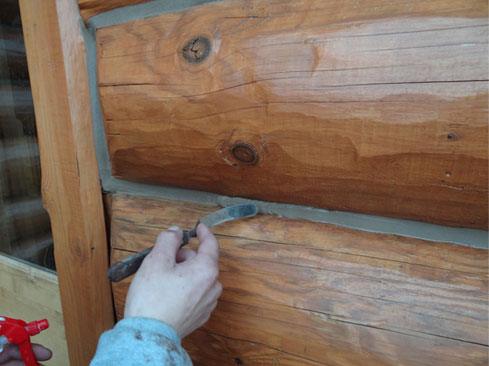
Finding the outside source of the air leak around window and door frames might be difficult. The opening source of the leak may be several inches from the spot where it is felt inside the home. The best way to attack air leaks is from exterior surfaces. You can seal the interior but if a crack or crevice is leaking air it may also leak water as well. Sealing the leak from the outside with Energy Seal prevents water penetration along with air infiltration.
Other Insulation
Insulating your garage is also important and can be relatively simple to do yourself if you have the tools and some experience. Weather stripping your garage is a good place to start. This will prevent drafts and the escape of any heat. You can also insulate the walls with foam board and fiberglass batt insulation.
Consider putting in a heating unit in the garage to keep temperature regulated so you can continue working there through winter. Family Handyman magazine discusses two options of natural gas heaters for your garage: “a forced-air garage heater that blows warm air or a “low intensity” infrared tube heater that radiates heat.
Plant Care

Tending to your garden and plants is a good DIY project for the upcoming winter. Every plant has different needs and is built to withstand different weather conditions. HGTV Magazine writes that the biggest problem is protecting the roots from rapidly fluctuating temperature. You want to bring in outdoor plants indoors, insulate some plants.
The Spruce has a few tips on keeping plants healthy through the winter.
- Most plants need less water in winter and so adjusting your watering schedule is an important part. The most important time to water is during the day, however you can water plants sufficiently before a freeze to prevent desiccation.
- Keep in mind the indoor temperature by keeping the plants away from furnaces, fireplaces, and drafts.
- Go easy on the fertilizer so as not to upset the plant’s natural cycle.
If you live in windy weather conditions, protect flowers from wind damage with fences or shrubs or some other protective barrier. However, be careful not to completely block all sunshine. Before a freeze you can shelter tender sprouts with an inverted bucket or a blanket. As far as your trees go, make sure to prune long branches as a good method to prevent wind damage.
Help maintain the value of your home by keeping in mind important seasonal and year round maintenance. Always assess the complexity of the job and the tools needed in order to decide whether you want to do it yourself or hire a professional. These decisions can end up saving you thousands of dollars in damage later. Your home is where your American Dream becomes a reality, don’t neglect it.
Is Chinking Cosmetic or a Sealant?
Perma-Chink has evolved into an elastomeric compound that has been specifically designed for use in log home sealing applications. Perma-Chink adds to the overall integrity of the structure by not only preventing water and air from entering the home, but also adding greatly to the overall effectiveness of the entire building envelope – keeping heat and air from escaping during the heating and cooling seasons. While it looks fantastic when properly applied, Perma-Chink is most definitely a sealant first and a cosmetic product second.
It should also be mentioned that a properly applied chinking compound will help keep out unwanted insects and other nuisance pests. In the case of a “chinkless” style home, many homeowners often desire to add a chink line for cosmetic purposes to differentiate the home from a smooth-sided home. Or oftentimes on a full log wall system Perma-Chink is used as a contrast in the color of the chosen finish.
Who Can Apply Chinking Properly? A DIYer or a Pro?

Basically anyone can apply Perma-Chink properly if they follow instructions that are available. Some homeowners attend workshops or seminars to learn how, should they choose to apply the product themselves. But in today’s busy environments, some homeowners choose to use the services of trained contractors as the design of their dream home may require the use of specialized equipment, such as lifts or scaffolding, and a trained contractor can usually shorten the time required to accomplish the job. Therefore the homeowner can tend to the other necessities involved to get moved in, and sometimes there are just not enough hours in the day for the homeowner to do this.
How has Chinking Changed Over the Past Decade?
Perma-Chink was the first synthetic chinking produced in 1981. There have been many significant changes made in formulations to improve the adhesion, flexibility, and longevity. Early formulations were lacking in elongation and freeze-thaw stability, which resulted in performance issues and storage and application concerns. Today’s Perma-Chink offers excellent qualities in all areas to meet the needs of the industry. Application can be accomplished in a much wider range of temperature extremes with little or no worries about product performance. There have also been additions to the color palette of the products to keep up with the homeowner’s desire to mix and match shades and hues of today’s finishes.
How is Log Chinking Repaired?
When Perma-Chink is properly installed, there are usually no repairs needed unless it is damaged somehow. The hard part is keeping people from trying to “feel” it before it cures, which results in indentations or fingerprints; and those usually occur right at the front door for some reason. But if repairs are needed, small separations can easily be repaired by applying a small bead of chinking into the damaged area and smoothing out with a small brush and water. Most chinking issues are the result of improper application of trying to make too little go too far. Again, read the directions prior to application and you should not have to make repairs.
Can You Stain Log Chinking or Change its Color in Any Way?
The answer is yes; Perma-Chink can be stained, but it will not take the color as wood does, so the results may be undesirable. Perma-Chink manufactures Chink Paint to change the color of the chinking, if so desired. Chink Paint uses the same raw materials as the chinking, so they are completely compatible with each other.
No matter how much you know about log home chinking, there is always something new to discover.
All About Linseed Oil – And Why It’s No Good For Wood
We occasionally get calls about the exterior of a home that has turned black.
Almost without fail it’s the result of using an oil-based stain that contained linseed oil.
Linseed oil is a yellowish oil derived from the dried seeds of flax plants, and is also known as flax seed oil. Linseed oil is used as a carrier in many brands of oil-based paints and stains. Since linseed oil is organic, many varieties of mold fungi thrive on it. Over time mold can proliferate to point where the coated surface can turn dark brown to black. One way to tell if the darkening is due to mold rather than UV damage is inspecting areas protected from direct sunlight like under eaves and overhangs; it will be the same dark color as the rest of the wall.
When this occurs, washing with Log Wash alone may not be enough to remove all of the discoloration due to mold growth. We recommend to first use Wood ReNew, along with some scrubbing, in order to remove the visible mold. Once the surface is cleaned with Wood ReNew, use Log Wash to help remove any residual linseed oil.

We don’t recommend blasting alone as a method of removing a heavy growth of mold. Linseed oil penetrates into the wood, and although blasting may remove most of the surface discoloration, there may be enough residual linseed oil remaining in the wood to support mold growth under the finish. If the home has been blasted, it will be necessary to give the home a good washing with a two cups of Log Wash per gallon of water solution before applying Prelude.
The best way to prevent this problem is to avoid the use of any product that contains linseed oil. No Perma-Chink Systems finishes contain linseed or other types of organic oils.
For more information, read these technical tips:
Cleaning with Wood ReNew and Log Wash Technical Tip
Why we recommend (and produce) water-based products
What are the benefits of using a top quality finish on a log home?
Whether you’re currently building your dream log home or simply checking off tasks on your annual home-maintenance “to do” list, we’re always looking for ways to skimp on expenses around the house. But when it comes to putting your best foot forward with a beautifully stained home that’s also protected from the exterior elements, you might want to think twice before being lured in by the lower price tag of a middle-of-the-road finishing product.
Think about it: Not only does a stain and finish define the aesthetic appeal of your log home, enhancing the striking beauty of the wood’s grain and natural color, but it serves as a shield for your home’s most precious building blocks – the logs. Because of this, it makes sense to spend the extra money upfront on a high-quality finish for your home. And, as it turns out, if you can swing the higher cost for the first application, you will save yourself oodles of cash over the lifetime of your log home.
What are the qualities to look for in a top quality log home finish?
To ensure a successful and long-lasting result, you’ll also need to consider factors like wood protection, maintenance and, of course, appearance.
Appearance: In addition to building a quality home, you want to build a beautiful home, which is why the finished appearance of your logs is so important. By spending a little bit more upfront, you’ll get a distinguished looking wood finish that will set your home apart from the rest.
A high performance finish gives long-lasting color retention through the use of a balanced formulation of transparent iron oxides and long lasting mildew inhibitors. By applying a clear topcoat, you also have the opportunity to create a gloss or satin finish and greatly extend the life of the stain system.
Longevity: With a high-quality product, comes high performance and longevity. The most important duty of your home’s finish is to shield your logs from the elements, including UV rays and water. While UV inhibitors are included in some high-quality stains, your finish should also repel rain but be permeable to water vapor to allow trapped moisture in your logs to evaporate. For topcoats and base stain, Lifeline™ provides you with options that “breathe,” allowing moisture within the logs to evaporate while reducing checking. Clear topcoats boost protection against UV rays and add water repellency – while making your exterior walls easier to clean. The smooth surface of a high-quality clear coat repels dirt and dust, making cleaning a breeze.
Value: There is no doubt that high-quality finishes will save you time and money in the long run. Lasting longer equates to less labor expense over the life of the finish. A high performance stain will typically last 5 to 8 years while low quality stain will expose your home to the elements in two years or less. High-quality finishes make the job go faster, cover larger square footage and require less maintenance over the years.
Environment: A high-quality stain should be formulated to meet and exceed emission standards established by the EPA (Environmental Protection Agency) as well as all state and local restrictions. Finishes should also be free of formaldehyde which is a known carcinogen.
Over the past few years almost all new innovations in coating technology have been in low VOC (Volatile Organic Compounds) water-based systems. This new technology has allowed the development of high quality products like Lifeline™ Ultra stains and Advance™ topcoats that not only look great but meet the most stringent environmental requirements in every state.
How do top quality finishes differ from the average finish, like one you could pick up at the local hardware store?
All stains differ in their lifespan, coverage rate and quality of appearance and protection. One of the most important aesthetic considerations for log home owners is stain color and tone. It seems like most stains look great right after they are applied but will that beauty stand the test of time? By choosing a high-performance finish like Lifeline™ Ultra-7, you are ensuring that the finish will look as beautiful years after application as it did the second day it was applied thanks to a balanced formula of transparent iron oxides, mildew inhibitors and an advanced polymer resin.
Here’s how it works: The transparent iron oxides protect your logs without resulting in a “painted” look that hides the natural texture and beauty of the wood grain. Plus, these pigments provide superior UV protection, blocking the fading and bleaching effects of the sun for a much longer period of time. In addition, the mildew-fighting components will help prevent any mildew or mold from growing in the finish itself, which will greatly reduce further discolorations on your logs.
Next is the durability. The secret behind durability of Lifeline™ Ultra-7 is state-of-the-art resin that creates a flexible and tough seal on your home’s logs. Perhaps more importantly than the seal’s strength, the resin also ensures that the seal is continuous, providing protection from holes and gaps that might otherwise develop with a lower-quality finish. In addition it has unsurpassed adhesion to wood. It’s this continuity that has proven to be much more resistant to UV degradation, color fading and adhesion loss.
The total cost for finishing your log home includes labor, tools and the materials involved in preparation of the wood surface, application of the finish and maintenance of that finish. When you consider the cost, it’s important to include the total, long-term cost of the stain that you choose.
For an average-size log home, labor costs for finishing would typically be about $4,500. In addition, about 20 gallons of stain would be needed to apply two coats to the home. For an ordinary stain, let’s say the cost per gallon is $30, totaling $600 for the entire job. Add in $4,500 for labor, and the total cost of the job is $5,100.
Field tests show that the job will last two years, the cost per year of service would be $2,550.
Now let’s take a look at the cost for a top-quality, 100-percent acrylic stain. At a cost of somewhere around $90 per gallon, the cost for 20 gallons would be $1,800. Again, the labor would be $4,500, so the total would be $6,300 – a significant increase from the lower-priced product. But, since the stain job will last at least five years, the cost per year of service would only come out to $1,260 – less than half the yearly cost of the “budget” stain job!
It’s no surprise that high-quality products from Perma-Chink Systems’ extensive collection of exterior finishes and stains will result in spending less time and money protecting and maintaining your log home over the years!
Is a quality finish maintenance-free? Lower maintenance? What type of maintenance is needed?
High-quality finishes require less maintenance over the years. Lifeline stains from Perma-Chink Systems are easy to apply and quick drying, so you can continue application without extended delays for drying. With our clear-coats you have the flexibility to perform maintenance with a minimum of labor and material costs. You can apply either color coats or clear coats over any surfaces requiring maintenance.
What are some of the things that can happen to a log home exterior if a low-quality finish is used?
Frequent maintenance maybe necessary due to water repellency, color fading, UV degradation, mold and mildew problems, holes and gaps might develop, etc.
Why does top quality typically mean higher cost? Is it the ingredients? Research?
Quality stains formulated with top-notch ingredients using the most advanced technology. Quality stains not necessary will cost more if you consider coverage, number of coats, years of service, labor cost.
Perma-Chink Systems Family of Finishes


